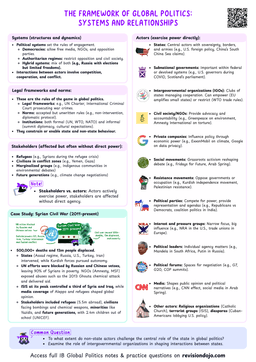Social Movements
Social Movement
Social movements are organized, collective efforts aimed at promoting or resisting change in society. They often emerge in response to perceived injustices or unmet needs and can operate at local, national, or global levels.

Key Characteristics of Social Movements
- Collective Action: Social movements involve groups of people working together, often outside of traditional political institutions.
- Shared Goals: Participants are united by common objectives, such as policy change, social justice, or cultural transformation.
- Sustained Activity: Unlike spontaneous protests, social movements engage in ongoing efforts over time.
- Informal Organization: While some movements have formal leadership, many rely on decentralized networks and grassroots organizing.
- Use of Nonviolent Tactics: Many movements prioritize peaceful methods, though some may resort to civil disobedience or direct action.
- Social movements are distinct from political parties or interest groups, as they often operate outside formal political structures and focus on broader societal change.
Types of Social Movements
- Reform Movements: Seek to change specific policies or laws within the existing system.
- Example: The Civil Rights Movement in the United States aimed to end racial segregation and discrimination.
- Revolutionary Movements: Aim to fundamentally transform society or overthrow existing political systems.
- Example: The Arab Spring uprisings sought to dismantle authoritarian regimes in the Middle East and North Africa.
- Resistance Movements: Oppose specific changes or policies, often defending the status quo.
- Example: The Tea Party Movement in the United States emerged in opposition to government spending and healthcare reform.
- Global Movements: Address transnational issues such as climate change, human rights, or economic inequality.
- Example: The Fridays for Future movement, inspired by Greta Thunberg, advocates for global action on climate change.
- #MeToo movement began as a grassroots effort to raise awareness about sexual harassment and assault, quickly spreading across countries and industries.
- The movement has led to significant cultural and legal changes, highlighting the power of collective action in addressing systemic issues.
The Role of Social Movements in Global Politics
- Challenging Power Structures: Social movements often question and disrupt existing power dynamics, advocating for marginalized or underrepresented groups.
- Influencing Policy: Through advocacy, protests, and public awareness campaigns, movements can pressure governments and institutions to enact change.
- Shaping Public Discourse: Movements play a crucial role in framing issues and shifting societal norms, such as changing attitudes toward gender equality or environmental sustainability.
- Building Transnational Networks: Global movements connect activists across borders, fostering solidarity and sharing strategies for change.
- When analyzing social movements, consider their goals, strategies, and impact at different levels such as local, national, and global.
- This multi-dimensional approach helps reveal the complexity and significance of their actions.
The Black Lives Matter Movement
- Background: Black Lives Matter (BLM) emerged in 2013 in response to the acquittal of George Zimmerman in the shooting death of Trayvon Martin. It gained global attention following the 2020 murder of George Floyd.
- Goals: BLM seeks to address systemic racism, police brutality, and racial inequality.
- Strategies:
- Protests and Demonstrations: BLM organized mass protests worldwide, drawing attention to racial injustice.
- Social Media Activism: The movement leveraged platforms like Twitter and Instagram to mobilize supporters and share information.
- Policy Advocacy: BLM advocates for reforms such as defunding the police and investing in community-based solutions.
- Impact:
- Global Awareness: BLM sparked international protests and inspired similar movements in countries like the UK, Brazil, and Australia.
- Policy Changes: The movement influenced policy debates on policing and racial justice in the United States and beyond.
- Cultural Shift: BLM has reshaped public discourse on race, prompting institutions to address diversity and inclusion.
- While BLM has achieved significant visibility and impact, it also faces challenges, including backlash from opponents and debates over its strategies and goals.


